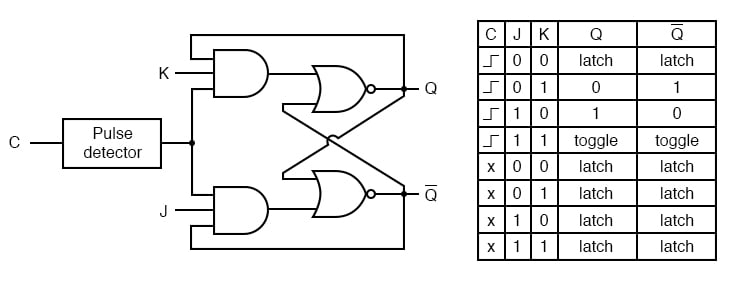

R = 1, S = 0 will set the output state Q = 1. That makes the output of gate 2 S = 0 because both inputs are high. One input of gate 1 is low so its output = 1. One input of gate 3 is low “0”, so its output = 1, which is R = 1. When clk = 1 and D =1 then gate 4 output = 0 because R = 1. When clk = 0, then S = 1 and R = 1, which is hold state for NAND gate SR latch. Binary Decoder – Construction, Types & Applications.Binary Encoder – Construction, Types & Applications.It is efficient as it uses less logic gate for fast speed and low cost. To change it to rising edge sensitive, we have to attach inverter with master latch’s enable pin as shown in the figure given below:ĭ Flip-flop can also be made using 3 S-R latches using 6 NAND gates.

We can also design it for positive or rising edge. it shows that the output state only changes when the clock signal goes from 1 to 0, meaning negative or falling edge of the clock signal. The output of slave latch will get updated as Q = Q m = D. When clk becomes 0, the master latch will get disabled and it will not change its state and the slave latch will get enabled. The master latch will evaluate its output state as Q m = D but it will not be processed by slave latch. When clk = 1 the master latch will be enabled and slave latch will be disabled. The first latch is master D-latch and the second one is slave-latch. Its schematic is given in the figure below: Excitation table of D flip-flop is given below:ĭ flip-flop is made from 2 D-latches. Excitation table shows the necessary inputs for a current state to change into a specific next state.


 0 kommentar(er)
0 kommentar(er)
